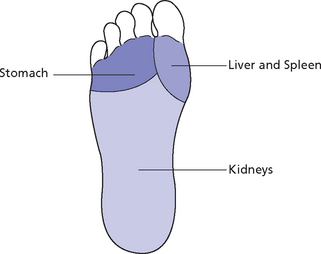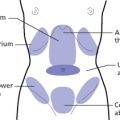 LIMBS
LIMBS
HOW WE ASK
When we ask about the limbs, we should make it clear that we mean all four limbs – that is, whether the patient has a problem such as weakness, heaviness or numbness of all limbs.
WEAKNESS OF THE LIMBS
Symptoms and Signs, Chapters 64 and 66
Box 39.1 summarizes the patterns underlying weakness of the limbs.
DIFFICULTY IN WALKING (ATROPHY/FLACCIDITY OF LIMBS
Observation, Chapter 18; Symptoms and Signs, Chapter 64
Box 39.2 summarizes the patterns underlying difficulty in walking.
FEELING OF DISTENSION OF THE LIMBS
Symptoms and Signs, Chapter 64
The five most common causes of a feeling of distension of the limbs are:
Qi stagnation causes a feeling of distension of the limbs, particularly in the hands and feet.
A feeling of distension of the limbs may also be due to retention of Dampness in the muscles, which may be associated with Cold or Heat; in this case, there would also be a feeling of heaviness of the limbs.
Box 39.3 summarizes the patterns underlying a feeling of distension of the limbs.
MUSCLE ACHE IN THE LIMBS
Symptoms and Signs, Chapter 64
Muscle ache in the limbs is a common symptom in postviral fatigue syndrome.
NUMBNESS/TINGLING OF THE LIMBS
Symptoms and Signs, Chapter 64
Box 39.4 summarizes the patterns underlying numbness/tingling of the limbs.
GENERALIZED JOINT PAIN
Case history 39.1 illustrates a pattern underlying generalized joint pain.
Box 39.5 summarizes the patterns underlying generalized joint pain.
TREMOR OF THE LIMBS
Observation, Chapters 4 and 18; Symptoms and Signs, Chapter 64
Full Wind is characterized by pronounced tremors or convulsions (during an acute febrile disease), vertigo, unilateral numbness and a Wiry pulse. Empty -Wind is characterized by fine tremors or tics, mild dizziness, tingling and a Choppy or Fine and slightly Wiry pulse.
The tongue indicating Liver-Wind may be Moving, Deviated or Stiff.
Case histories 39.2 and 39.3 illustrate tremor caused by Liver-Wind.
Box 39.6 summarizes the patterns of Liver-Wind.
UPPER LIMBS
Pain and inability to raise the shoulder
Symptoms and Signs, Chapter 65
In rare cases, an inability to raise the shoulder accompanies Chest Painful Obstruction Syndrome, in which case the patient suffers from chest pain, breathlessness and palpitations.
Box 39.7 summarizes the patterns underlying pain and inability to raise the shoulder.
Pain in the elbow
Symptoms and Signs, Chapter 65
Box 39.8 summarizes patterns underlying elbow pain.
Pain in the hands
Symptoms and Signs, Chapter 65
Box 39.9 summarizes the patterns underlying hand pain.
Cold hands
Symptoms and Signs, Chapter 65
Yang deficiency causing cold hands is most commonly of the Spleen, Lungs or Heart; it is ameliorated by the application of heat. Blood deficiency, especially of the Heart, may also cause cold hands; it is accompanied by palpitations and dizziness, and is more frequent in women. Liver-Qi stagnation may also cause cold hands but in conjunction with cold feet; this is called the ‘Four Rebellious Syndrome’ in which the ‘four rebellious’ indicate cold hands and feet. The famous formula Si Ni San Four Rebellious Powder is used for this pattern. An important difference between cold limbs due to Yang deficiency and cold limbs due to Qi stagnation is that in the former case the whole limb will be cold, whereas in the latter case only the hands and feet, particularly the fingers and toes, are cold.
Box 39.10 summarizes the patterns underlying cold hands.
Itchy hands
Symptoms and Signs, Chapter 64
Another possible cause of itchiness of the hands is Blood deficiency leading to Wind in the skin.
Box 39.12 summarizes the patterns underlying itchy hands.
LOWER LIMBS
Pain in the hip
Symptoms and Signs, Chapter 66
The most common cause of hip pain is invasion of Cold and Dampness in the hip joint, in which case the pain is unilateral, severe in nature and with marked rigidity of the joint.
Pain in the thigh
Symptoms and Signs, Chapter 66
Chronic thigh pain may also be due to Qi deficiency with Blood stasis, or to Kidney-Yang deficiency.
Pain in the knees
Symptoms and Signs, Chapter 66
Box 39.13 summarizes the patterns underlying knee pain.
Cold feet
Symptoms and Signs, Chapter 66
Obstruction of Phlegm in the Lower Burner may also cause the feet to be cold.
Pain in the feet
Symptoms and Signs, Chapter 66
Pain that is due to Blood deficiency is a chronic pain with tingling.
In addition, a severe pain may be due to Cold.
Box 39.14 summarizes the patterns underlying foot pain.
Oedema of the feet
Observation, Chapters 18 and 19; Symptoms and Signs, Chapters 64, 66, 68
Oedema of the feet is usually due to Kidney-Yang deficiency; in this case the oedema is pitting. If the oedema is not pitting, it is due to Qi stagnation. Oedema is discussed in more detail in Chapter 18.
Pain in the soles
Symptoms and Signs, Chapter 66
We can differentiate three distinct areas of the sole (Fig 39.1): the ball of the foot, which pertains to the Stomach channel; the area under the big toe, which pertains to the Liver and Spleen channels, and the rest of the sole, which pertains to the Kidney channel. Therefore a pain in the ball of the foot is often due to a Stomach-Qi deficiency with invasion of Dampness in the limbs or to Stomach-Heat, while a pain below thebig toe is often due to Liver-Fire or Dampness in the Spleen.

Fig. 39.1 Areas of the sole


